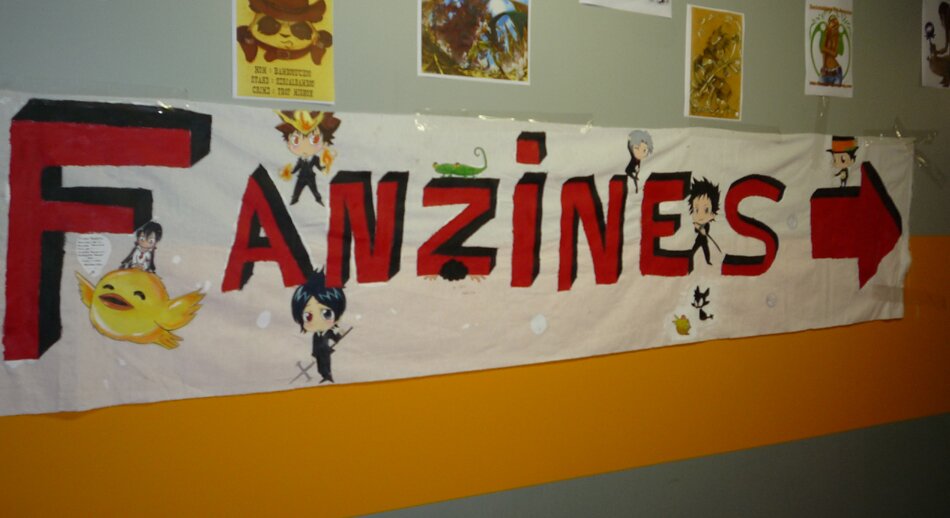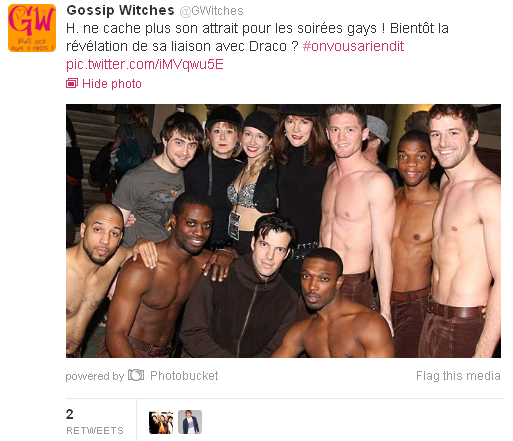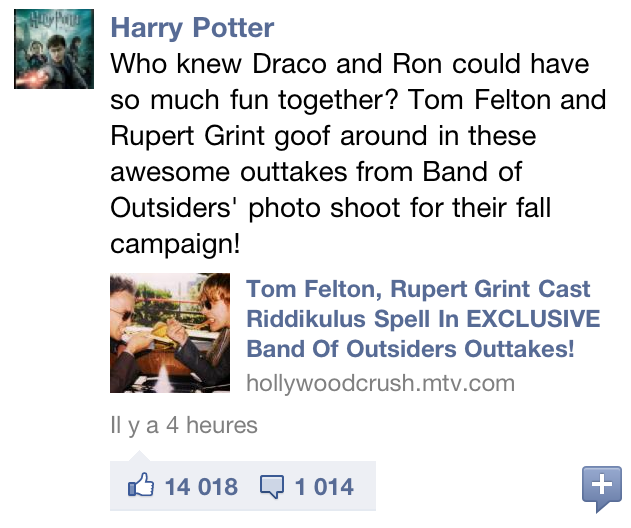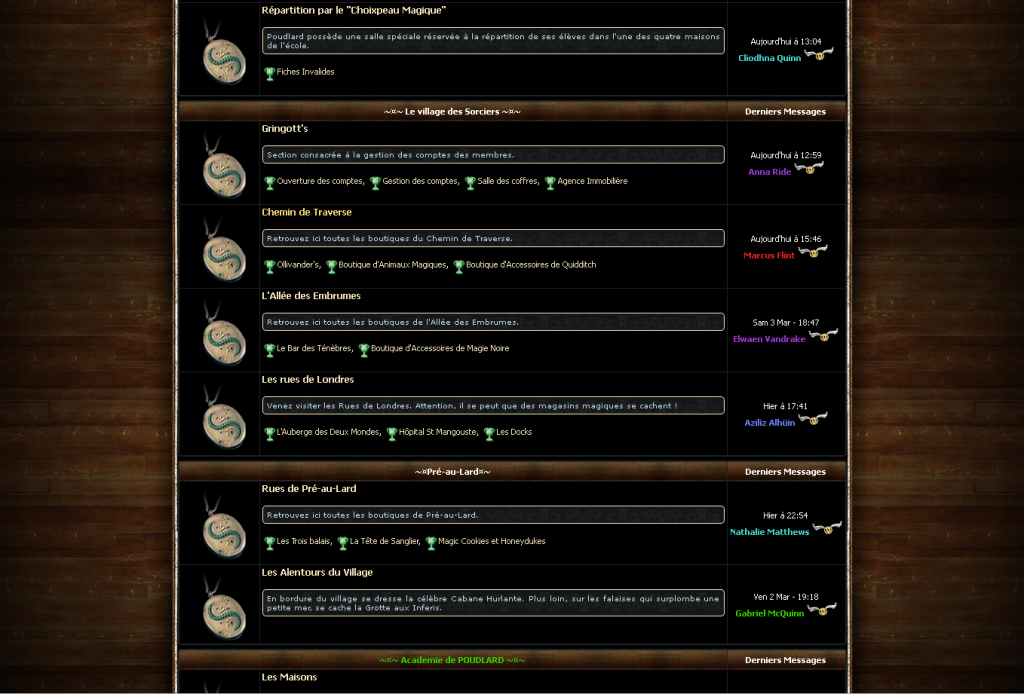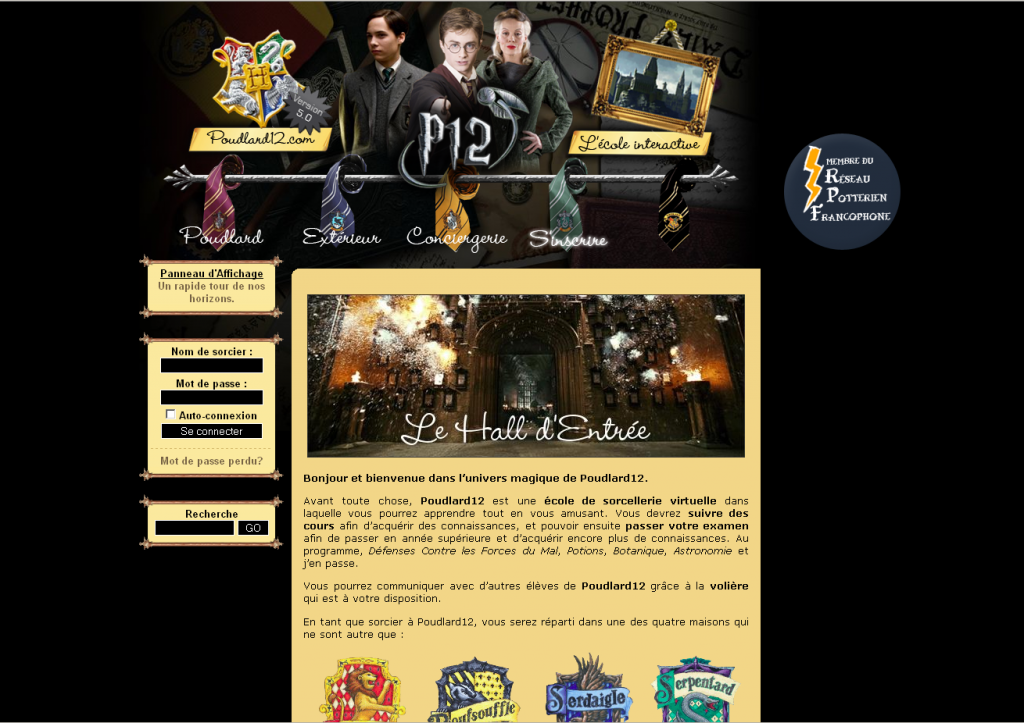When fan communities embrace the principle of storytelling 1/3
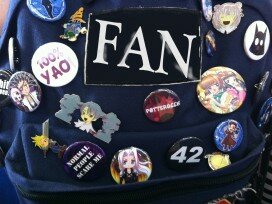
by Aurore Gallarino, published on 7.05.2012
The aim of this series of articles is to provide a complete overview of certain fan practices which can be considered as potential transmedia practices, in particular in terms of storytelling. For our purposes the idea is not to exhaustively cover the new ways that fan communities appropriate, rewrite, and poach (De Certeau, 1980; Jenkins, 1992) from “mediacultures productions” (Maigret, Macé 2005), but instead offer a journey, which is neither linear nor complete, to the heart of expanded universes (Peyron, 2008) where fans create, navigate, and prolong the experience they first had. On the first leg of the journey, we will look at “fan community story factories”.
Because of my own research fields and because exploring a fan community is a work that requires stamina with all its different stages and meetings involved (in fact the researcher or apprentice researcher, along with others, is considered a “newbie”), this article will mainly concentrate on examples from the media-advertising franchise Harry Potter (Vanhée, 2004), an expanded universe which offers a wealth of especially interesting fan practices because of how long it has been around and its numerous franchises.
Storytelling: the fan community story factories
.FAN PRODUCTIVITY
Fan communities are the places where all sorts of creativity is expressed which we will group under the label ‘fan production’ or ‘fan productivity’. This fan production is organised like a production network, with meaning and values like those of official networks. This fully-fledged ‘art world ’ (Jenkins, 2008 from Becker, 1988) is expressed in its own place and within its own culture: “fandom”. Fandom, the domain of fans, is that place which is never completely defined but always present where fans meet and share their experience as viewers/readers, whether through virtual meetings on websites, IRCs, forums, blogs, or real meetings at fan conventions, conversations with friends, writing workshops, concerts etc.
The fan community is brought together by one criterion which surpasses all the others: enthusiasm of individuals for the same topic, whether it is a book, film, TV series, artist etc. Fan activities are indeed generally defined as such because they require such a high level of commitment (time, money, and how symbolic it is) from the fans. When the readers/viewers take up the media at their disposal to develop content inspired by their favourite production, somehow, they become themselves directors of media content and take part in the extension of an original work as a multimodal, plurimedia, or even transmedia work, if we can accept such a broad definition of that term. These fan productions contribute, in a sense, to the broadening of the official work as they tell stories around, within, and beyond the original story. When the fans begin to create, extend, and produce content, they take part in the storytelling process and the distribution of the original work. These new behaviors extend the boundaries of official content and deepen an expanded universe, offer more about the characters, and thus question everything that is already there but which the author, director, or official creator did not produce or sanction.The media productions become “worlds” in themselves (Peyron, 2008) and the content then transforms the work into a scaled-up version, which is a bit like a dream made up of official content and non-official content that the fans are always working on or reworking.
In the next part we will list the different media and resources used by fan communities to continue telling the story and make the work come alive in as many media and places as possible.
.REWRITING THE ORIGINAL STORY
To “tell stories” the fans produce fan fiction over many years beforehand. Fan fiction is an activity which involves writing fiction using characters created by another author. This literature is based on the idea of “repetition with a difference” (Derecho, 2006) or filling in “the narrative gaps” (Fiske, 1992; Martin, 2007), which means filling the holes left in the story by the original authors. Through fan fiction, the fan effectively uses subtexts, the unsaid, the nearly said, the never said, interviews with authors, interviews with actors, and different franchises related to the original world to remodel these worlds by reworking the canong i.e. the official content or reference text. For example, fan fiction can tell the story of the eighth Harry Potter novel which will never be released in bookshops, or explore the childhoods of characters in How I Met Your Mother, or involve rewriting the whole of the Star Wars saga based on a “And what if Luke Skywalker had a twin…” scenario.
Nevertheless, where fan fiction is especially rich in teaching us about the ways readers/viewers do things is in multi-referential or “crossover” writing. Writing “crossover” fiction is mixing expanded universes. For example, like Batman (see below – “Why so serious?”) meeting Peter Pan to eat with the white rabbit and hatter from Alice in Wonderland, or Tintin travelling on the Star Trek spaceship; it is simply about converging several expanded universes in the same place or text. One of the tools at fans disposal to “cross” these universes in a plausible way is the use of characteristics unique to a “world”. For example, a spaceship which can travel in time and space, like the TARDIS in Doctor Who, makes all types of crossover in all types of universe possible…
Example: This example of fan fiction tells the story of a meeting between Sherlock Holmes and the main character in Doctor Who – the Doctor :
“Whoa” he said. “Whoa! 1890! London! The magnifying glass! You are…you are Sherlock Holmes! Whoa, that is amazing. Rose – it’s Sherlock Holmes!”
He began to shower me with compliments, saying that he had always dreamed of meeting me. Ms. Rose remarked that she thought I was thinner than I was and asked where the hat, pipe, and you my dear Doctor Watson were, to which I deigned not reply.
The man introduced himself as The Doctor. He stressed the capital letters and gave no name with the title. He was accompanied by Ms. Rose Tyler.
But more interestingly still, the cross-over can also be based on the actors themselves. Indeed, when actor A plays character P1 in a film and then character P2 in a TV series, they can serve as a catalyst for the creativity of fans who will then use the presence of actor A in universes 1 and 2 to mix the universes together, develop a story, and continue the adventure.
For example, David Tennant is a British actor best known for his role as the Doctor in the TV series Doctor Who. But David Tennant also plays the role of Barty Crouch Jr. in the film Harry Potter and the Goblet of Fire. The fact that Tennant appears in both has encouraged fans to collide the two universes in the following way:
“I think the question is…” the Doctor frowned more than slightly, “Who are you?
“My name… is Barty Crouch Junior. […] And you?” Barty asked, annoyed.
“The Doctor!” And he grinned. “Why do you look like me?”
Source : Whofic.com
Fan fiction writing makes room for virtually unlimited possibilities because of the potential which, over years of practice (around ten years in the case of Harry Potter fandom, and forty years for Star Trek – the fandom pioneer) have made the fan fiction universe a real world of amateur writing full of complexity, with its own niches, rules, semantics, secrets, supporters, and detractors (for example some authors like Robin Hoob or Anne Rice openly forbid fan fiction which is based on their work).
.DIY STRUCTURED AROUND THE ACTOR-CHARACTER
The fans not only use the different roles and characters played by an actor to extend the story. Indeed, the actor, through their presence in the media in general, serves as media themselves and can be used by the fans to fuel fandom with content and news which they can then act upon. For example, a account holder can take a photo of an actor from the Harry Potter films and invent gossip based on the characters.
In this doctored photo of the actor Daniel Radcliffe (top left in the photo) we are given the impression of a “scandal” where the character ‘Harry’ no longer hides his homosexuality. And it should be noted that the reference to the potential affair between Harry and Draco Malfoy (another character from this universe) springs from the world of fandom fan fiction where a sub-community exists who write stories where Harry is in a relationship with another man i.e. Draco (Tosenberger, 2008 ; Gallarino, 2010).
It should be said that Warner Bros uses the same ploy to generate content based around the Harry Potter franchise.
In fact a photo shoot with Tom Felton (Draco Malfoy) and Rupert Grint (Ron Weasley) was used as a pretext to attract fans’ attention on Facebook by playing on the fact that in the original work Draco and Ron are supposed to hate each other, but in the photo shoot they got on very well.
.RPG FORUMS
The fans’ desire to adapt and extend their favourite universes is seen in non-official forums as well. On these RPG forums the fans play the characters and make them evolve in different topic areas on the website. By posting comments, the fan interacts with other fans and extends the story through messages threads posted in the different sections of the forum.
The Harry Potter 2005 RPG forum, for example, has a storyline which takes place in the world of Harry Potter but set several decades after the events narrated in the official story.
Extract from the pitch: “Many years have passed since the great battle which raged in Hogwarts and opposed evil against the young Harry Potter. May his soul rest in peace, those of his friends, and all his loved ones. Now we are fast approaching the twenty-second century, but what those remarkable wizards did will always stay etched in our memories. But a new era of darkness is hanging over our world …”
In the same way the Harry Potter expanded universe has created “virtual schools” such as poudlard12.com (Poudlard is the French translation of Hogwarts) where fans can “become accomplished wizards….do their homework…. and get points and money so that your House can win the Four House cup and then celebrate victory in the common room”.
These virtual games are entirely directed, animated and financed by the fans themselves. Before the online social networks which we know today existed, these fan communities were already involved in “social gaming” where the story being told was as important as the enthusiasm to share it with “friends”. And far from disappearing, these fan practices continue: the fans now use the new tools of the social web to make the player’s experience even more immersive by continuing to produce content based around their favourite universe. And there is no sign that their enthusiasm for this universe is abating.
Select bibliography
BACON–SMITH, Camille. – – Philadelphia : University of Pennsylvania Press, 1992, 352p.
DE CERTEAU, Michel. – – Gallimard, 1990, 350p. (Folio Essai)
DERECHO, Abigail. – « Archontic Literature: A Definition, a History, and Several Theories of Fan Fiction », in HELLEKSON, Karen ; Kristina BUSSE. – – Jefferson, North Carolina : McFarland & Co, 2006, pp. 61–78.
FRANCOIS, Sébastien. – « Fanf(r)ictions. Tensions identitaires et relationnelles chez les auteurs de récits de fans », Réseaux, 27 (153), 2009, pp.157–189.
GRANJON, Fabien. ; DENOUEL, J.. – « Exposition de soi et reconnaissance de singularités subjectives sur les sites de réseaux sociaux », Sociologie, 1, 2010.
JENKINS, Henry. – – Routledge, 1992 – 343p. (Coll. Studies in Culture and Communication).
JENKINS, Henry – « La « Filk » et la construction sociale de la communauté des fans de science–fiction », pp. 212–222, dans GLEVAREC, Hervé ; MACE, Eric ; MAIGRET, Eric. – . – Paris : Ed. Armand Colin et INA, 2008, – 368 p. (Coll : Médiacultures)
LE GUERN, Philippe – – Rennes: Presses Universitaires de Rennes, 2002
LE GUERN, Philippe. – « NO MATTER WHAT THEY DO, THEY CAN NEVER LET YOU DOWN… » : Entre esthétique et politique: sociologie des fans, un bilan critique – Réseaux, 27 (153), 2009, pp.19–54.
MACE, Éric ; MAIGRET Éric (dir.). – , Paris : Armand Colin, Ina, 2005.
MARTIN, Martial. – « Les Fanfictions sur Internet » in Médiamorphoses, hors série n°3, Ina, Armand Colin, pp.186–189.
PEYRON, David. – « Quand les oeuvres deviennent des mondes » in Réseaux, 148–149, 2008, pp. 335–368.
TOSENBERGER, Catherine. – « Oh my God, the Fanfiction! Dumbledore’s Outing and the Online Harry Potter Fandom. » in Children’s Literature Association Quarterly, 33, 2, 2008, pp. 200-206.
VANHEE, Olivier. – « Reading Harry Potter: A personal and collective experience », Participations. Journal of Audience & Reception Studies. – 5, 2, novembre 2008.
ONLINE RESOURCES
JENKINS, Henry. – « How “Dumbledore’s Army” Is Transforming Our World: An Interview with the HP Alliance’s Andrew Slack », – article du 23 juillet 2009 [En ligne : here or there ]
GALLARINO, Aurore. – Etude lexicométrique d’un corpus de fanfictions Harry Potter dites « pour adultes » publiées sur le site internet fanfiction.net au cours du mois de juin 2004. – Etude réalisée dans le cadre du Master 1 information-communication (2009-2010). [En ligne : here]
NEXT ARTICLES IN THIS DOSSIER
“Do it yourself : les productions « pirates » des communautés de fans” 2/3
“Entre fiction et réalité : les aller-retour incessants des communautés de fans” 3/3



